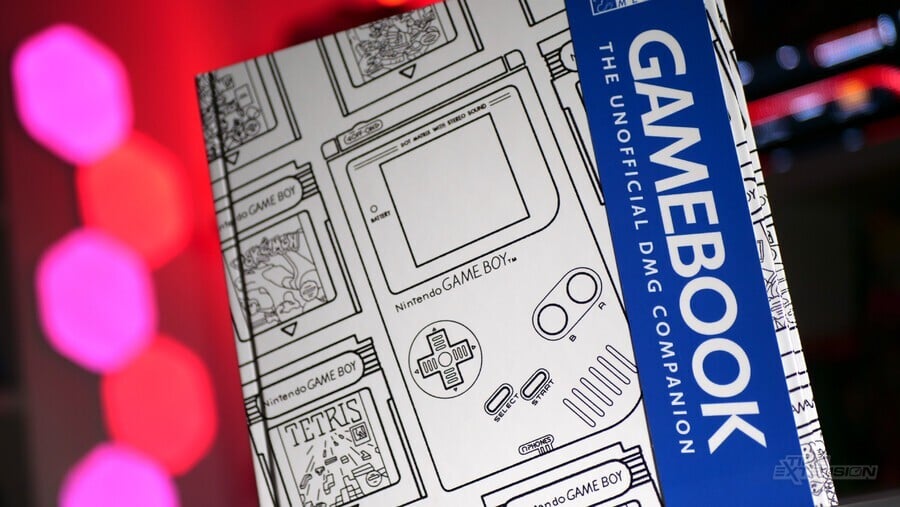
The Game Boy will have been a formative system for many players who grew up in the '90s. As Nintendo's first true portable games console, it built on the foundations laid down by the Game & Watch line whilst establishing a dominance which has remained largely unchallenged ever since; even today, Nintendo's mastery of the handheld sector is supreme due to the astonishing commercial success of its hybrid Switch system.
Thanks to its almost ubiquitous nature back in the '90s, the Game Boy is a powerful nostalgic draw for a whole generation, and it's this rich bounty of rose-tinted recollection which GameBook: The Unofficial DMG Companion hopes to exploit. Created by Ninty Media's Paul Murphy, this crowdfunded tome (£37,415 raised from 631 backers) differs from Bitmap Books' recent Game Boy: The Box Art Collection by focusing more on history, information and personal stories, all relating to this million-selling portable.
Within its pages, you'll find the usual history lessons – not just on the machine itself, but on its creator, the late Gunpei Yokoi, who was instrumental in transforming Nintendo into one of the leading lights of the video game industry. Pages are also spent on breaking down the 'game pak' cartridges that made the Game Boy so unique when compared to other LCD handhelds of the '80s (complete with a little taster on how to spot fake carts – a very modern-day issue for collectors) and a full teardown of the console itself – all with bespoke photographs snapped either by Murphy or a contributor (Wil Overton's wife Sue being one such individual).
The real meat of Game Book is its essay-length features on a wide range of related topics. Key titles like Tetris, Super Mario Land, Kirby's Dream Land, Metroid II, Pokémon and Link's Awakening all get multi-page write-ups from esteemed journalists (Nintendo Life's Gavin Lane, Becca Smith and Ryan Craddock all contribute), which not only place each game in context with its contemporaries, but also impart some very heartfelt memories relating to playing and experiencing these seminal games the first time around.
Elsewhere, Game Book devotes coverage to relatively obscure topics – like the Japan-only Game Boy Light, which had the misfortune of launching in the same year as the Game Boy Color, and the Game Boy Camera, a groundbreaking device which – while looking rather crude by modern standards – made the then-aging handheld feel fresh and new once more. Murphy himself even pens a chapter on the Analogue Pocket, an awesome FPGA-powered portable which is arguably the closest thing we've got to a Game Boy successor in the modern era.
Finally, the back of the book is packed with mini-reviews of significant Game Boy games, complete with lovely full-page screenshots in that trademark dot-matrix style. All of this is accompanied by some gorgeous bespoke artwork, much of which does an excellent job of imitating the original, official art without having to get Nintendo's permission. Throw in a short foreword by Total! and EDGE launch editor Steve Jarratt, and you've got a pretty essential book for anyone who has ever picked up a Game Boy and been entranced for hours.
Indeed, this book does an excellent job of tickling your nostalgia bone via a combination of intelligent prose, eye-catching artwork and screenshots which instantly transport you back to the early '90s. Those of you too young to have grown up during this period might find its allure a little less powerful, but it's still a fantastic way to educate yourself on the incredible impact this pocket-sized powerhouse had on the gaming industry.
A card that came with our review copy of the book states that in 2024, the Ninty Fresh team aims to produce another book based on the Game Boy Color. On the evidence of Game Book, that will be one to look out for, too.






